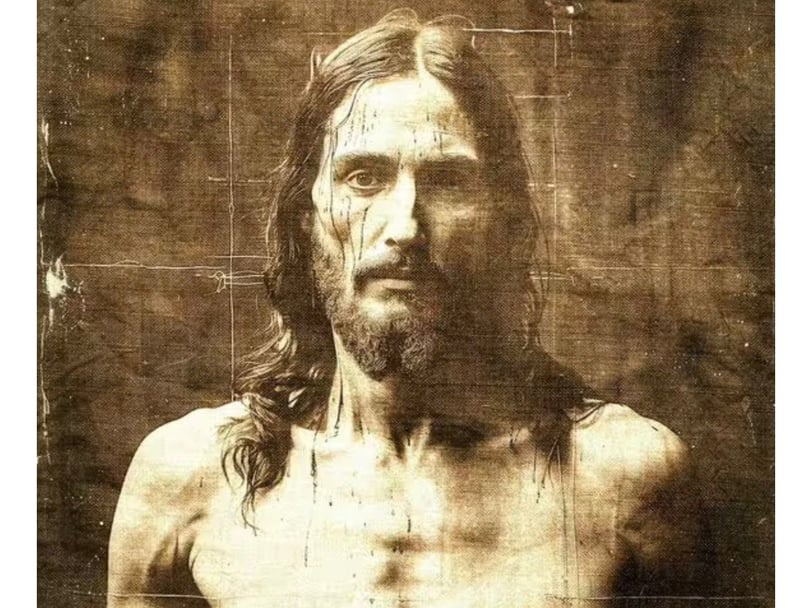"Ancient Mystery Meets Modern Tech: AI Recreates Jesus's Face from the Shroud of Turin"


The Shroud of Turin has intrigued scholars, religious believers, and skeptics for centuries. This 14-foot linen cloth, which bears the faint image of a man on both its front and back, is believed by many to be the burial shroud of Jesus Christ. The image on the shroud appears to depict a bearded man with long hair, fitting the classical portrayal of Jesus. However, its authenticity has been a subject of much debate. Initially believed to be a medieval artifact, recent advancements in technology have reignited discussions about its origins, particularly with the use of artificial intelligence to generate what some claim to be the “real” face of Jesus.
The recent use of AI to analyze and recreate the image on the Shroud of Turin has brought a fresh perspective to this age-old mystery. Utilizing sophisticated image processing algorithms, AI tools such as Midjourney have been employed to create a more detailed and realistic representation of the face that appears on the shroud. The resulting image shows a man with long, flowing hair, a beard, and facial wounds that are consistent with descriptions of Jesus’s crucifixion, such as scratches and bruises on the forehead and cheeks. This depiction is remarkably similar to traditional portrayals of Jesus, which has led some to claim it as evidence supporting the authenticity of the shroud.
The history of the Shroud of Turin is as enigmatic as the image it bears. Historical records trace the shroud's public display back to 1354 in France, where it was presented as a genuine relic of Jesus's burial. However, skepticism arose quickly, and by 1389, the shroud was denounced as a forgery by a French bishop, who claimed it was a clever painting designed to deceive the faithful. In the 1980s, radiocarbon dating seemed to support these claims, dating the fabric to the period between 1260 and 1390 AD, suggesting a medieval origin.
Despite this, more recent studies using advanced techniques such as X-ray analysis have challenged these earlier findings. Some researchers now argue that the linen may indeed be from around 2,000 years ago, aligning with the era of Jesus. This assertion is based on analyses that consider factors such as contamination of the cloth, which may have skewed earlier radiocarbon dating results. This ongoing debate illustrates the complexity of using scientific methods to validate religious relics, as well as the limitations of these techniques.
The AI-generated images have sparked a renewed interest in the Shroud of Turin and have also brought forth critical discussions regarding the role of technology in exploring historical and religious artifacts. Critics argue that AI, being dependent on existing data, may inadvertently reproduce cultural and historical biases. This is evident in the fact that the AI-generated image closely resembles traditional Western depictions of Jesus, which may not accurately represent the historical Jesus, considering the diverse ethnicities in the region of his life.
Despite these critiques, the use of AI to analyze the Shroud of Turin has opened new avenues for understanding one of history’s most debated artifacts. While it may not provide definitive answers, the technology offers a novel way to engage with ancient mysteries and provoke thought about the intersections of faith, history, and modern science. As the dialogue continues, the Shroud of Turin remains a symbol of faith for some and a puzzle for scholars and skeptics alike.Insights Magazine
